Countless ocean lovers have rested in the shade of the small shack after long surf sessions, the draping palm fronds offering relief from the seaside sun.
It’s a place where groups have gathered for celebrations, beachfront barbecues and ukulele jam sessions, transporting visitors far away from the rest of the world.
For dogs, it’s been their own little slice of paradise for 40 years.
“Dogpatch,” an iconic shack at San Onofre State Beach just south of San Clemente, got new life this week as volunteers from the San Onofre Surfing Club rebuilt the structure, which had fallen into shambles in the last decade, each year becoming more at risk of being swallowed by the sea as sand disappears.
“Once it’s gone, it’s gone. I think it’s really important to save it for future generations to be able to see it and use it,” said Craig Ephraim, a board member of the San Onofre Surfing Club who has spent his life at the small stretch of beach.
‘A bit of a time warp’
Look over the bluff looming above the beach and you’ll get a glimpse of what it was like here years ago.
“It still looks a lot like it did in the ’30s,” Ephraim said. “There’s more people, but it’s not paved over or developed or commercialized. It’s very much like how it had been, it’s a bit of a time warp. That’s what a lot of people liked about his place. You get off the freeway and you go back in time.”
That’s the goal for the San Onofre Surfing Club – to be keepers of this unique stretch of coastline, to preserve its rich history and to maintain it for future generations.
San Onfore State Beach – and the 1,000-member surf club that helps State Parks care for it – have a storied history at this beach, which in the early days was a fish camp before surfers discovered the mellow, rolling waves in the ’30s.
The entire San Onofre area was taken over by the Marines in 1942, through eminent domain, to form Camp Pendleton after Pearl Harbor, according to the book “San Onofre: Memories of a Legendary Surfing Beach,” written by club member David Matuszak.
After the military took over, local surfers formed the San Onofre Surf Club, a select group that were allowed on military property provided they had a sticker on their windshield to access the Surf Beach. At first, only 500 members were allowed to surf at the beach, before that number was doubled.
A family culture has long thrived at San Onofre, making it a microcosm of Southern California in the ’50s and ’60s — a time when neighbors knew one another.
Sign up for our Coast Lines newsletter, a weekly digest of news and features on how the residents of the SoCal coast are building ties to their changing environment. Subscribe here.
“It was considered to be one of the most exclusive clubs in the world,” Matuszak said in a past interview. “Hollywood stars couldn’t get in. It was a five-year waiting list.”
But more than just social gatherings, the club has been keepers of the beach.
When the state entered into a 50-year-lease with the military to oversee the area – a deal that ends in 2021 – the club lobbied to make it a public beach. That would mean giving up its own private beach, but it would be better than losing it to the military.
Through the decades, when anything falls apart, the club works with the state to ensure this idyllic beach stays pristine, sprucing up lush gardens and bamboo-adorned areas, ensuring the showers work, and other behind-the-scenes maintenance that adds to the allure of the coastline.
“If it weren’t for the club, that beach would be a lot different now,” Ephraim said. “The state originally had plans to pave it, with parking on the bluff. They were going to build the restrooms on the beach – those would be gone if they did. The club used to fight with the state, but now it’s been a good working relationship. They are supportive of us and we are of them.”
Origins of ‘Dogpatch’
When the state took over in 1971, there were two shacks in the general plan – one at Old Man’s surf break, and another down the beach that was destroyed until the “Dogpatch” structure replaced the shack in 1981.
The latest project got state approval because it is a replacement of the original.
Just why did the area at the south end of San Onofre, closest to the shuttered nuclear plant, earn the name “Dogpatch”?
In the early years, beachgoers with dogs would mostly gather at “the Point” on the northern end of the beach, until too many people started showing up with their pooches.
Before the state took over, the road farther down was built to create the “Dogpatch” area, designating it as a space where canines could roam, said club board member Bob Lombard.
“It really was, if you had a dog, you had to park here,” said Lombard, who spearheaded the shack reconstruction effort.
Lombard, a general contractor by trade, remembers the early surfers who built the shack 40 years ago, some of whom who have since passed away.
“I feel bad seeing this thing falling to the ocean,” he said, describing how the large wooden posts were only about 18 inches down in the sand, tipping over to the side.
The same poles – originally telephone poles acquired by a club member who worked for a power company – were used for the new structure. But everything else is new. That includes the palm fronds that lap over the structure, which were gathered by Lombard’s wife, Ann Marie, who noticed workers trimming palm trees near their home in Capistrano Beach.
“These are the prime, Southern California version of grass shacks. This is the Cadillac of palm frond,” Lombard said.
The shack holds a special place for club member Cyndie Kontoes, who used to visit with her dog Shadow, a Labrador-retriever mix who had his own pole he would sit next to.
“Sleep and drink and have a blast,” Kontoes recalled of the shack’s heyday.
With four back surgeries keeping her from surfing, and the shack in disrepair, she hasn’t been visiting this stretch of beach often.
But the resurrection of “Dogpatch” is something to celebrate.
Kontoes brought a pot of chili and corn bread for the volunteers who rose before sunrise to complete the shack’s re-birth this week.
“I wouldn’t come before, it was too depressing,” she said. “This got my stoke back.”

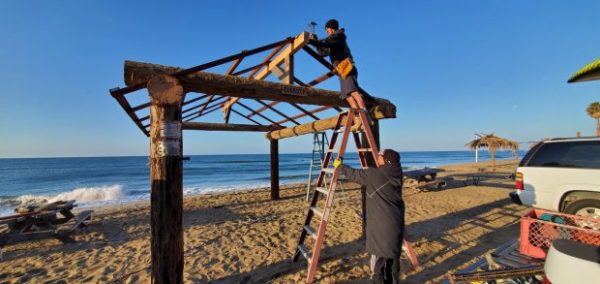
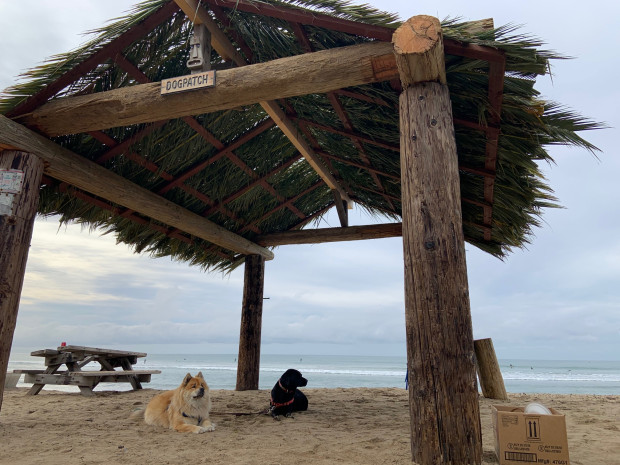
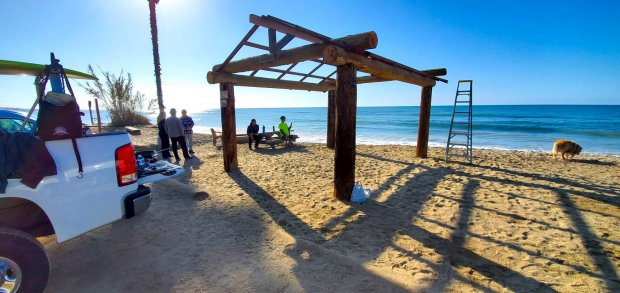
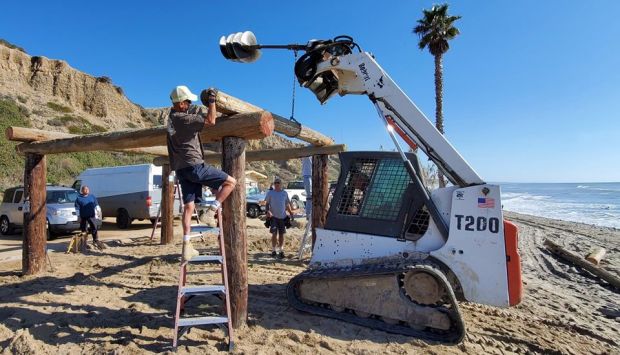
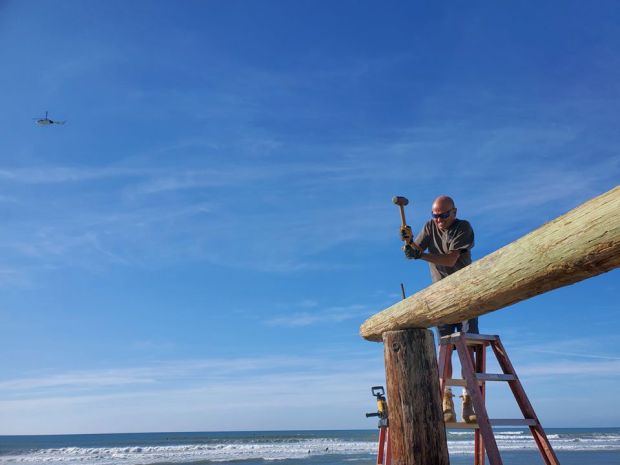
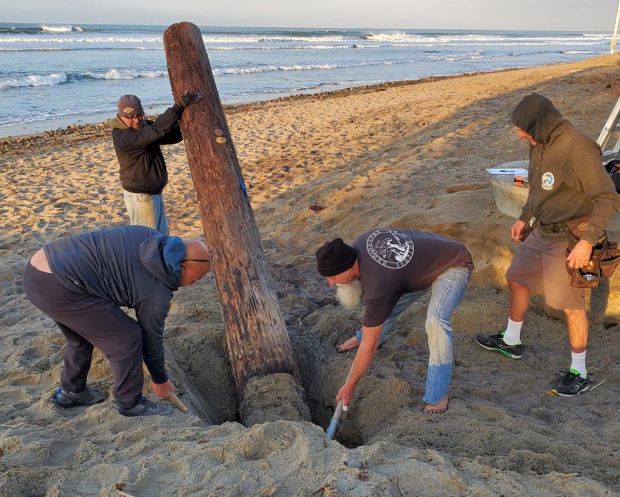
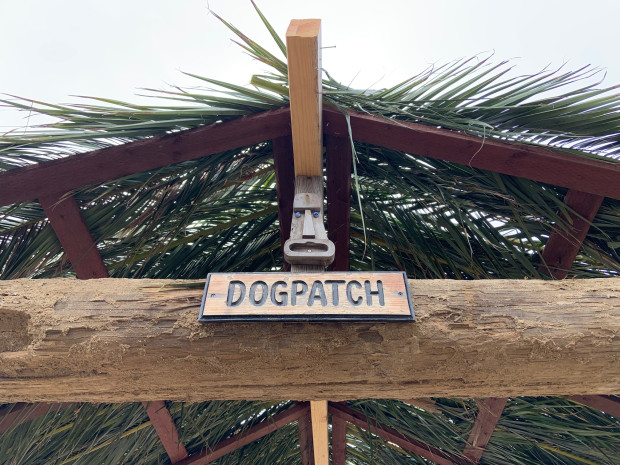




Recent Comments